US damage estimates from $15 billion to $100 billion
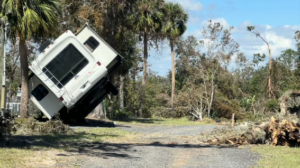
A travel trailer rests precariously on its side in Steinhatchee following the nearby landfall of Hurricane Helene, September 29, 2024. Courtesy Silver Digital Media
Florida’s Big Bend region can’t catch a break when it comes to major hurricanes lately. At 11:10 pm Thursday night, Hurricane Helene made landfall at Dekle Beach right outside Perry as a Cat 4 storm, with wind speeds of up to 140 mph, and continued rampaging up through Georgia, the Carolinas, and Tennessee. As of Sunday evening, the storm has claimed 88 lives across the southeastern US, including 11 in Florida, and caused power outages for millions. About 450,000 residences and businesses in Florida were still without power Saturday. This marks the first Category 4 to hit Taylor County and the third hurricane to make landfall there in 13 months, following Debby last month and Idalia in August 2023.
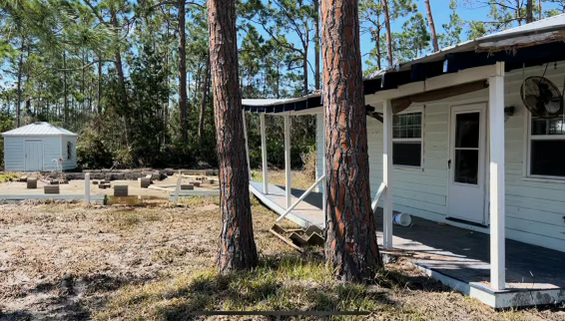
A house in Steinhatchee (right) was separated from its foundation (left) from Hurricane Helene’s winds of up to 140 mph. Courtesy, Silver Digital Media
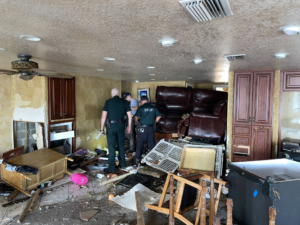
Hundreds of homes in coastal Pinellas County suffered flood damage from Hurricane Helene’s 10-15 foot storm surge. Courtesy, Pinellas County Sheriff’s Office
While Tallahassee avoided the brunt of the damage, storm surge was the major issue for counties along Florida’s Gulf Coast, along Helene’s path to landfall. Charlotte and Sarasota counties both had 4-5 feet of storm surge above the ground level and the Tampa Bay area, including Hillsborough and Pinellas counties, with 6-8 feet of surge. The area saw widespread flooding, impacting at least 30,000 structures and causing “major damage” to another 750 buildings. While the initial storm may have subsided, officials are urging citizens to remain at the ready due to the huge levels of rainfall that may cause further flooding as rivers swell, with a focus on the Ochlockonee, Sopchoppy, and Chipola rivers in Florida’s Panhandle over the next week.
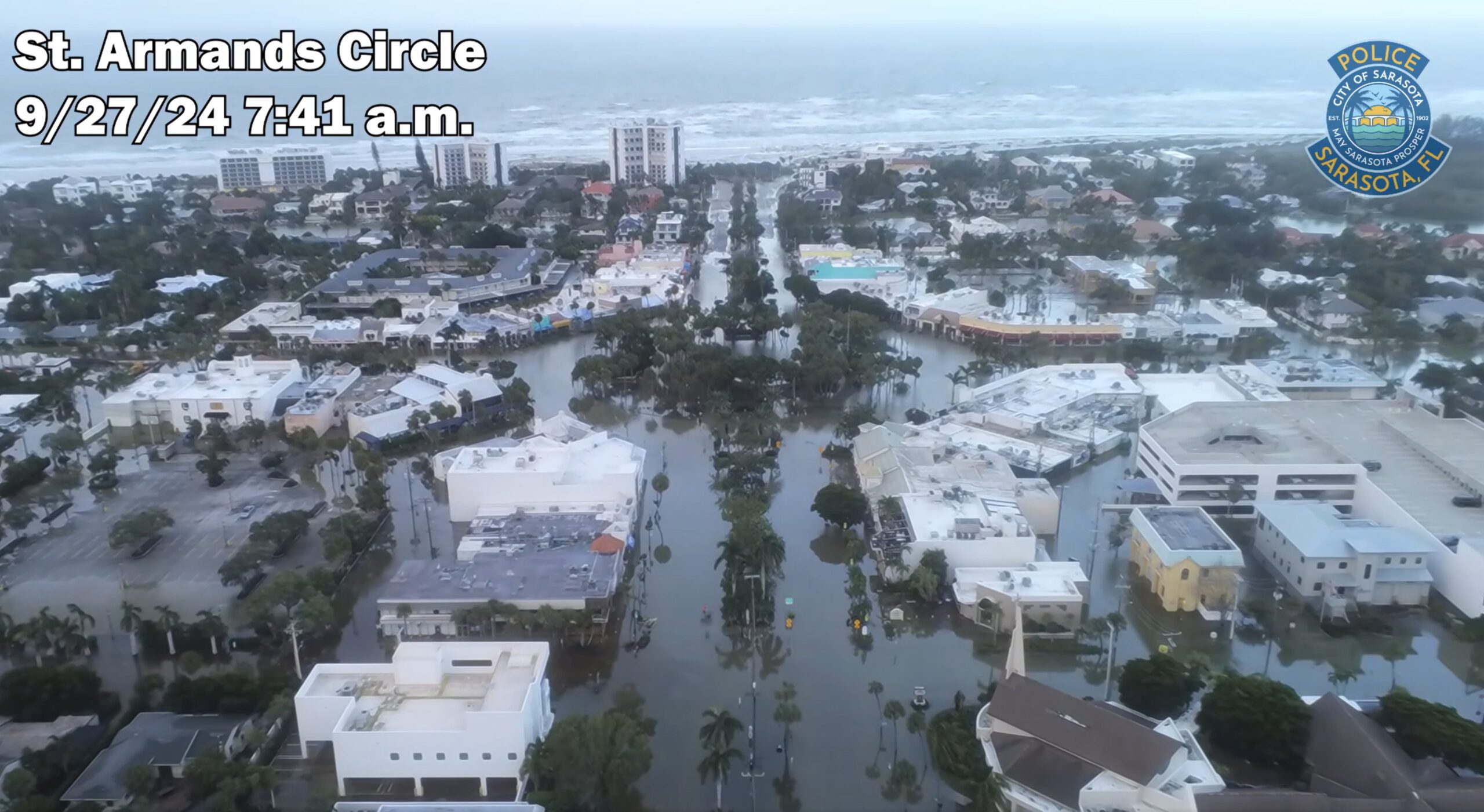
Flooding in coastal Sarasota County from Hurricane Helene, September 27, 2024. Courtesy, Sarasota PD
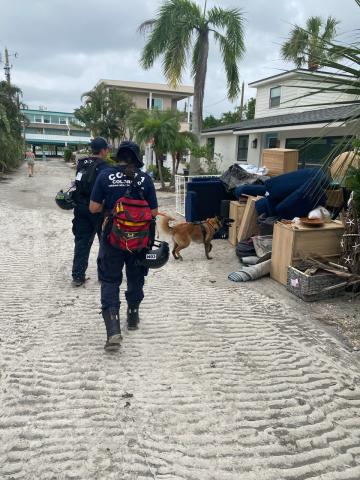
FEMA Colorado Task Force team conducts a search and rescue after Hurricane Helene in St. Petersburg, September 28, 2024. Courtesy, FEMA
In response, emergency teams have sprung into action to help get critical infrastructure back online and start search and rescue efforts with thousands of national guardsmen pouring over 21 different counties in Florida. While at least 15 counties mandated evacuations, many residents still opted to stay in their homes – a decision that deeply complicates many rescue missions. As we discussed in previous Helene updates, officials had “major concerns” with the lack of mass migrations out of harm’s way, in places like Citrus and Pinellas counties. Pinellas County Sheriff Bob Gualtieri shared harrowing stories of residents having to climb into attics and onto roofs in the pitch black to escape the rising waters, waiting and hoping for some sign of rescue. “We made our case. We told people what they needed to do, and they chose otherwise,” Gualtieri said. He warned that the death toll will only rise as the first responders move door-to-door in the inundated areas – only time will tell if their reluctance to evacuate was as costly as other impacts from the storm.
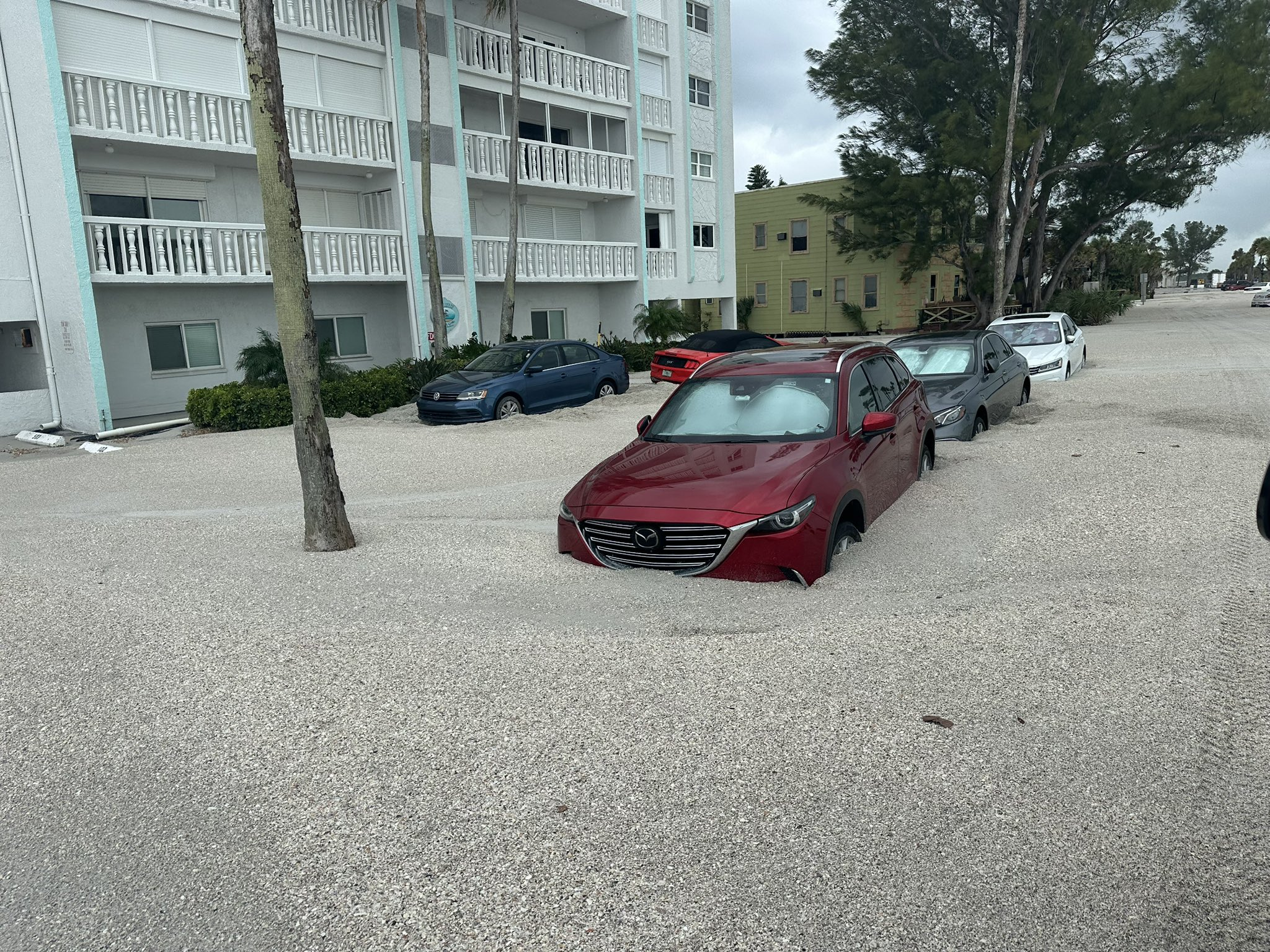
Cars were engulfed in sand on several streets in St. Petersburg Beach from Hurricane Helene’s storm surge. Courtesy, Pinellas County Sheriff’s Office
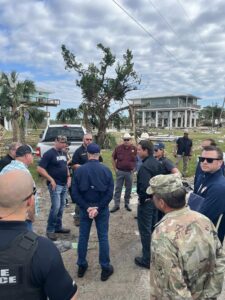
Governor Ron DeSantis, FEMA Administrator Deanne Criswell, Florida Division of Emergency Management Director Kevin Guthrie and FEMA Region 4 Administrator Robert Samaan tour damage and discuss ongoing response operations for Hurricane Helene in Florida. Courtesy, FEMA photos by Kirk Hanlin, Jaclyn Rothenberg
The Florida Division of Emergency Management is currently engaged in over 2,300 missions assisting counties with response resources, repairing infrastructure, and coordinating personnel across the Sunshine State. “We want people to get back in their homes and businesses as soon as possible”, said Governor DeSantis at a Manatee County news conference Saturday afternoon. “It’s going to take a lot of grit…a lot of determination…(but) we’ll get people back going in a good direction again.”
By Friday afternoon, the Florida Office of Insurance Regulation had received reports from insurance companies of just under 40,000 claims, with estimated insured losses of almost $435 million. Because Helene was mostly a storm surge and flooding event, homeowners policies won’t apply in many cases, as I explained during my many media interviews these past few days, including on WTVT-TV Fox 13 News in a segment titled “How to deal with your insurance company after storms.” Estimates for multistate total losses aren’t certain, ranging wildly between $15 billion to over $100 billion. But projections for Florida insurance losses are currently in the single-digit billions, ranging from what Security First Insurance CEO Locke Burt calls a “manageable” $2 billion to $4 billion, to Gallagher Re’s preliminary estimates coming in between $3 billion and $6 billion.
Yesterday, Florida Chief Financial Officer Jimmy Patronis issued Directive 2024-01, directing “all available law enforcement resources” within the Department of Financial Services (DFS) Division of Criminal Investigations to be assigned to Disaster Fraud Strike Teams. These teams have deployed 80 law enforcement officers so far, to “take appropriate legal action, including arrest, prosecution, and/or issuance of civil penalties for anyone who is engaging in fraudulent insurance practices…or otherwise seeking to take advantage of consumers through unfair or deceptive acts or practices.” The directive details the acts and practices that fraud investigators will be on the look-out for. The DFS also issued a Notice to the Insurance Industry and Consumers outlining the rights and obligations by law arising out of this declared State of Emergency. It includes an extended cancellation period for public adjusting contracts, the limitation on public adjuster compensation, the cancellation period for roofing contracts, and heightened penalties involved for violations.
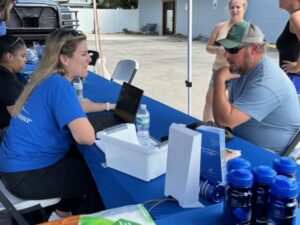
A resident is helped at the insurance village in Perry on September 29, 2024.
Mobile feeding units have been deployed in Florida, with five in Tallahassee and 12 in Perry, and the American Red Cross has reported over 1,900 evacuees in some 80 shelters nationwide. An insurance village was set up over the weekend in Perry to help residents file their homeowners insurance claims and answer any questions they had on coverage. As our first responders continue to work and get Florida back online, we’d like to say thank you and to send our condolences to all those affected by Helene across the country. If you’d like to help Florida victims of Helene, consider donating to the nonprofit Florida Disaster Fund.

